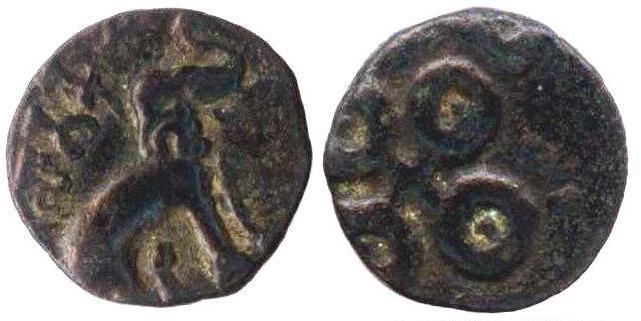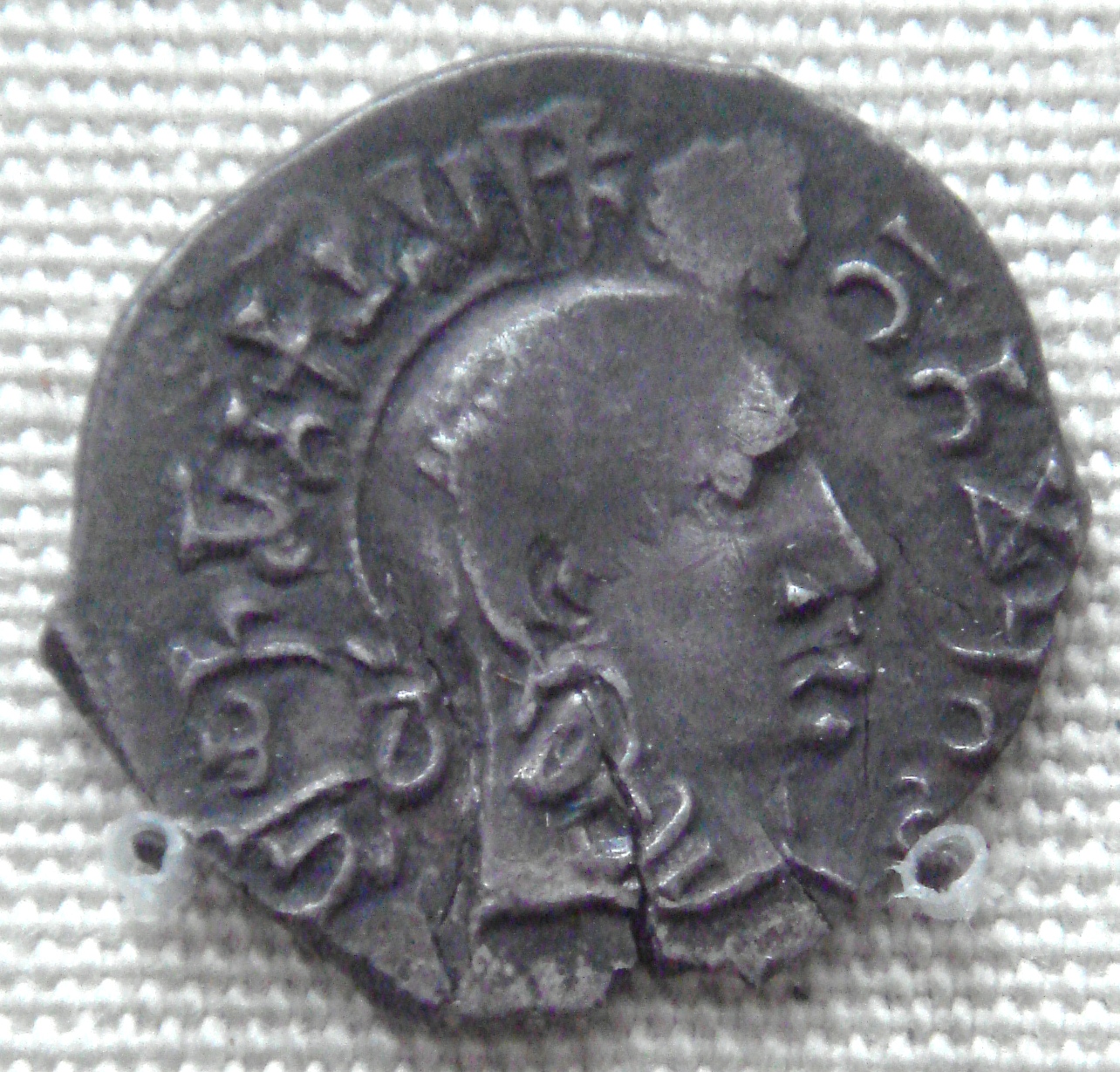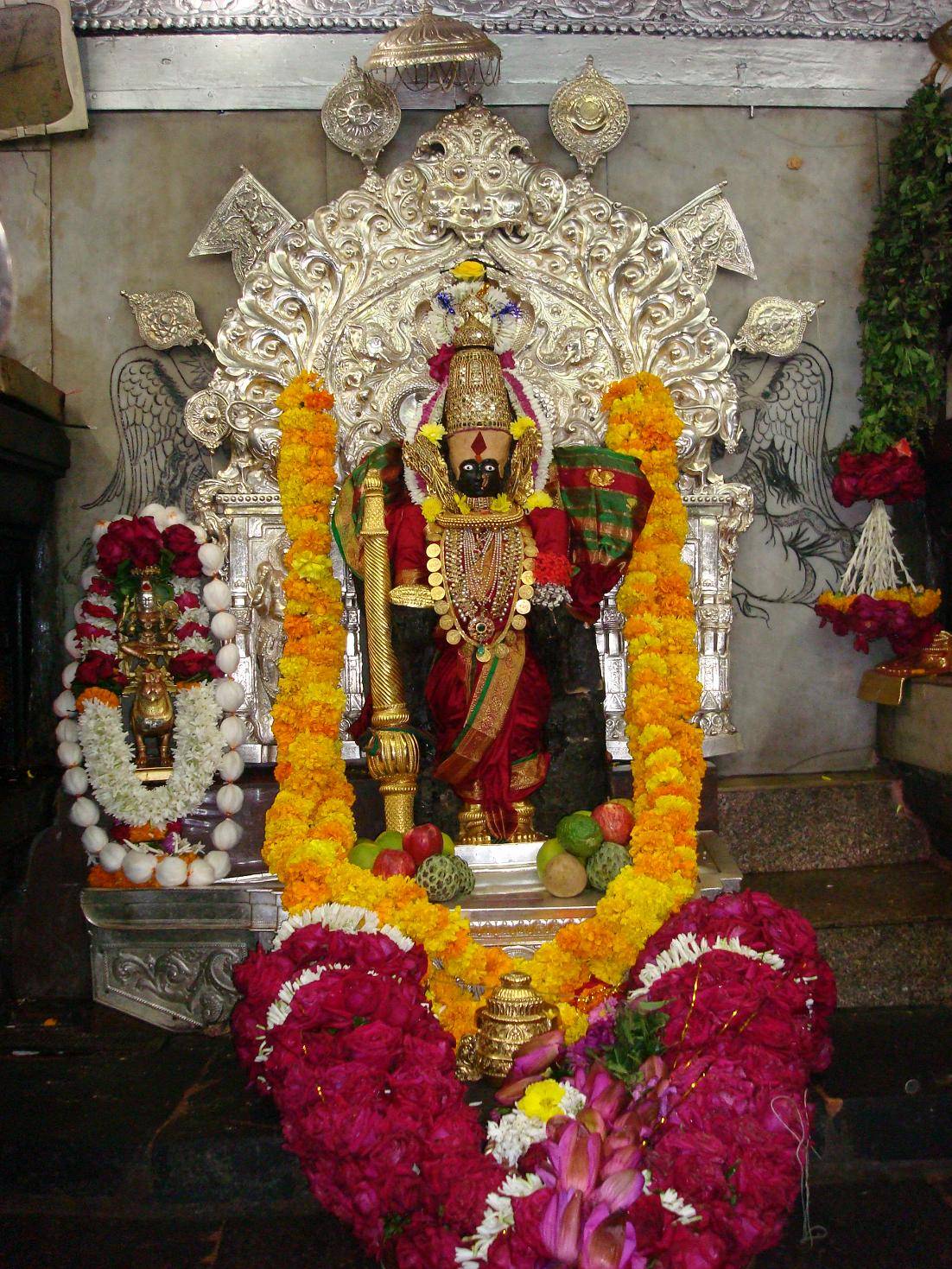|
Chutu
The Chutu dynasty ( IAST: Cuṭu) ruled parts of the Deccan region of South India between first and third centuries CE, with its capital at Banavasi in present-day Karnataka state. The Chutus probably rose to power as Satavahanas feudatories, and assumed sovereignty after the decline of the Satavahana power. Except for the edicts of Asoka, the inscriptions of the Chutu dynasty are the oldest documents found in the northern part of Karnataka State, India. Name The name "Chutu-''kula''" ("Chutu family") is found in the contemporary inscriptions. The coins attributed to the family bear the legends ''Raño Cuṭukaḷānaṃdasa'' ("of king Chutukalananda"), ''Raño Muḷānaṃdasa'', and ''Raño Sivaḷānaṃdasa''. The word "Cuṭukaḷānaṃdasa" was misread as "Cuṭukaḍānaṃdasa" by some earlier scholars, leading to different theories about the names of the kings and their dynasty. For example, numismatist E. J. Rapson (1908) theorized that "Chutu-kada-nanda" meant "J ... [...More Info...] [...Related Items...] OR: [Wikipedia] [Google] [Baidu] |
Satavahana
The Satavahanas (''Sādavāhana'' or ''Sātavāhana'', IAST: ), also referred to as the Andhras in the Puranas, were an ancient Indian dynasty based in the Deccan region. Most modern scholars believe that the Satavahana rule began in the late second century BCE and lasted until the early third century CE, although some assign the beginning of their rule to as early as the 3rd century BCE based on the Puranas, but uncorroborated by archaeological evidence. The Satavahana kingdom mainly comprised the present-day Andhra Pradesh, Telangana, and Maharashtra. At different times, their rule extended to parts of modern Gujarat, Madhya Pradesh, and Karnataka. The dynasty had different capital cities at different times, including Pratishthana (Paithan) and Amaravati ( Dharanikota). The origin of the dynasty is uncertain, but according to the Puranas, their first king overthrew the Kanva dynasty. In the post- Maurya era, the Satavahanas established peace in the Deccan region and re ... [...More Info...] [...Related Items...] OR: [Wikipedia] [Google] [Baidu] |
Satavahanas
The Satavahanas (''Sādavāhana'' or ''Sātavāhana'', IAST: ), also referred to as the Andhras in the Puranas, were an ancient Indian dynasty based in the Deccan region. Most modern scholars believe that the Satavahana rule began in the late second century BCE and lasted until the early third century CE, although some assign the beginning of their rule to as early as the 3rd century BCE based on the Puranas, but uncorroborated by archaeological evidence. The Satavahana kingdom mainly comprised the present-day Andhra Pradesh, Telangana, and Maharashtra. At different times, their rule extended to parts of modern Gujarat, Madhya Pradesh, and Karnataka. The dynasty had different capital cities at different times, including Pratishthana (Paithan) and Amaravati ( Dharanikota). The origin of the dynasty is uncertain, but according to the Puranas, their first king overthrew the Kanva dynasty. In the post- Maurya era, the Satavahanas established peace in the Deccan region and resi ... [...More Info...] [...Related Items...] OR: [Wikipedia] [Google] [Baidu] |
North Karnataka
North Karnataka is a geographical region in Deccan plateau from elevation that constitutes the region of the Karnataka state in India and the region consists of 13 districts. It is drained by the Krishna River and its tributaries the Bhima, Ghataprabha, Malaprabha, and Tungabhadra. North Karnataka lies within the Deccan thorn scrub forests ecoregion, which extends north into eastern Maharashtra. Transport Bus * North Western Karnataka Road Transport Corporation NWKRTC, serves the north western part of Karnataka. * Kalyana Karnataka Road Transport Corporation KKRTC, serves the north eastern part of Karnataka Air Airports in the region are * Belgaum Airport * Hubli Airport * Jindal Vijaynagar Airport * Bidar Airport * Gulbarga Airport Airlines and destinations Belgaum Airport is an airport in Belgaum, a city in the Indian state of Karnataka. Built in 1942 by the Royal Air Force (RAF), Belgaum Airport is the oldest airport in North Karnataka. The RAF used the air ... [...More Info...] [...Related Items...] OR: [Wikipedia] [Google] [Baidu] |
Banavasi
Banavasi is an ancient temple town located near Sirsi in Karnataka. Banavasi was the ancient capital of the Kannada empire Kadamba that ruled all of modern-day Karnataka state. They were the first native empire to bring Kannada and Karnataka to prominence.It is away from its nearest large city Sirsi through SH 77. History Banavasi is the oldest town in the Karnataka state. It has grown up around the Madhukeshwara Temple built in the 5th century and dedicated to Shiva the supreme God in Shaivism, a major branch of Hinduism. 5th-century copper coin was discovered here with an inscription in the Kannada script, one of the oldest such coins ever discovered. Adikavi Pampa, the first poet of Kannada, wrote his epics in Banavasi. The town once was the capital of the Kadamba rulers, an ancient royal dynasty of Karnataka. They established themselves there in A.D. 345 and ruled South India for at least two centuries. Banavasi contains some of the oldest architectural monu ... [...More Info...] [...Related Items...] OR: [Wikipedia] [Google] [Baidu] |
Yajna Sri Satakarni
Yajna Sri Satakarni (Brahmi: 𑀲𑀺𑀭𑀺 𑀬𑀜 𑀲𑀸𑀢𑀓𑀡𑀺 ''Siri Yaña Sātakaṇi''), also known as Gautamiputra Yajna Sri, was an Indian ruler of the Satavahana dynasty. He was the brother of Vashishtiputra Satakarni. His reign is dated variously: c. 152-181 CE, c. 165-195 CE, c. 170-199 CE or c. 174-203. He is considered to be the last great king of the Satavahana dynasty. He regained some of the territory lost to Shakas (the Western Satraps) under Vashishtiputra Satakarni. He defeated the Western Satraps and reconquered their southern regions in western and central India. The Satavahana started to decline after Yajna Sri Satakarni, while the Western Satraps would continue to prosper for another two centuries. Coinage File:Gautamiputra Yajna Satakarni.jpg, Coin of Gautamiputra Yajna Satakarni File:Coin of Gautamiputra Sri Yajna Satakarni.jpg, Coin of Gautamiputra Yajna Satakarni Inscriptions There are two inscriptions of Yajna Sri Satakarni at Ka ... [...More Info...] [...Related Items...] OR: [Wikipedia] [Google] [Baidu] |
Kolhapur
Kolhapur () is a city on the banks of the Panchganga River in the southern part of the Indian state of Maharashtra. It is the administrative headquarter of the Kolhapur district. In, around 2 C.E. Kolapur's name was 'Kuntal'. Kolhapur is known as ''`Dakshin Kashi''' or Kashi of the South because of its spiritual history and the antiquity of its shrine Mahalaxmi, better known as Ambabai. The region is known for the production of the famous hand-crafted and braided leather slippers called Kolhapuri chappal, which received the Geographical Indication designation in 2019. In Hindu mythology, the city is referred to as "''Karvir''." Before India became independent in 1947, Kolhapur was a princely state under the Bhosale Chhatrapati of the Maratha Empire. It is an important center for the Marathi film industry. Etymology Kolhapur is named after Kolhasur, a demon in Hindu History. According to History, the demon Kolhasur renounced asceticism after his sons were killed by G ... [...More Info...] [...Related Items...] OR: [Wikipedia] [Google] [Baidu] |
Puranas
Purana (; sa, , '; literally meaning "ancient, old"Merriam-Webster's Encyclopedia of Literature (1995 Edition), Article on Puranas, , page 915) is a vast genre of Indian literature about a wide range of topics, particularly about legends and other traditional lore. The Puranas are known for the intricate layers of symbolism depicted within their stories. Composed originally in Sanskrit and in other Indian languages,John Cort (1993), Purana Perennis: Reciprocity and Transformation in Hindu and Jaina Texts (Editor: Wendy Doniger), State University of New York Press, , pages 185-204 several of these texts are named after major Hindu gods such as Vishnu, Shiva, Brahma, and Adi Shakti. The Puranic genre of literature is found in both Hinduism and Jainism. The Puranic literature is encyclopedic, and it includes diverse topics such as cosmogony, cosmology, genealogies of gods, goddesses, kings, heroes, sages, and demigods, folk tales, pilgrimages, temples, medicine, astronomy ... [...More Info...] [...Related Items...] OR: [Wikipedia] [Google] [Baidu] |
Gautamiputra Satakarni
Gautamiputra Satakarni ( Brahmi: 𑀕𑁄𑀢𑀫𑀺𑀧𑀼𑀢 𑀲𑀸𑀢𑀓𑀡𑀺, ''Gotamiputa Sātakaṇi'', IAST: ) was a ruler of the Satavahana Empire in present-day Deccan region of India. He was mentioned as the important and greatest ruler of Satavahana Dynasty. He ruled in the 1st or 2nd century CE, although his exact period is uncertain. His reign is dated variously: 86-110 CE, c. 103-127 CE, 106-130 CE, or more recently and specifically ca. 60-85 CE. The information available about Gautamiputra Satakarni comes from his coins, the Satavahana inscriptions, and the royal genealogies in the various Puranas. The best known of these is the Nashik '' prashasti'' ( eulogy) inscription of his mother Gautami Balashri, which credits him with extensive military conquests. Historical evidence suggests that Gautamiputra revived the Satavahana power after a decline caused by Saka invasions. Ancestry Except the ''Brahmanda Purana'', all the Puranas that contain t ... [...More Info...] [...Related Items...] OR: [Wikipedia] [Google] [Baidu] |
Nashik
Nashik (, Marathi: aːʃik, also called as Nasik ) is a city in the northern region of the Indian state of Maharashtra. Situated on the banks of river Godavari, Nashik is the third largest city in Maharashtra, after Mumbai and Pune. Nashik is well known for being one of the Hindu pilgrimage sites of the Kumbh Mela, which is held every 12 years. Nashik is located about 190 km north of state capital Mumbai. The city is called the "Wine Capital of India" as more than half of India's vineyards and wineries are located here. Around 90% of all Indian wine comes from the Nashik Valley. Nashik is one of the fastest-growing cities in India. It has been a major industrial center in automobile hub. The city houses companies like Exxelia, Atlas Copco, Robert Bosch GmbH, CEAT Limited, Crompton Greaves, Graphite India, ThyssenKrupp, Epcos, Everest Industries, Gabriel India, GlaxoSmithKline, Hindustan Coca-Cola, Hindustan Unilever Limited, Jindal Polyster, Jyoti Structures, ... [...More Info...] [...Related Items...] OR: [Wikipedia] [Google] [Baidu] |
Nahapana
Nahapana (Ancient Greek: ; Kharosthi: , ; Brahmi: , ;), was an important ruler of the Western Kshatrapas, descendant of the Indo-Scythians, in northwestern India, who ruled during the 1st or 2nd century CE. According to one of his coins, he was the son of Bhumaka. Name Nahapana's name appears on his coins in the Kharosthi form (), the Brahmi form (), and the Greek form (), which are derived from the Saka name , which means "protector of the clan". Period The exact period of Nahapana is not certain. A group of his inscriptions are dated to the years 41-46 of an unspecified era. Assuming that this era is the Shaka era (which starts in 78 CE), some scholars have assigned his reign to 119-124 CE. Others believe that the years 41-46 are his regnal years, and assign his rule to a different period. For example, Krishna Chandra Sagar assigns his reign to 24-70 CE, while R.C.C. Fynes dates it to c. 66-71 CE, and Shailendra Bhandare regards 78 CE as the last year of his reign ... [...More Info...] [...Related Items...] OR: [Wikipedia] [Google] [Baidu] |
Bhumaka
Bhumaka (Kharosthi: , ; Brahmi: , ; ?–119 CE) was a Western Kshatrapa ruler of the early 2nd century CE. He was the father of the great ruler Nahapana, according to one of the latter's coins. He was preceded by Abhiraka (Aubhirakes), of whom a few coins are known. His coins bear Buddhist symbols, such as the eight-spoked wheel (dharmachakra), or the lion seated on a capital, a representation of a pillar of Ashoka. Bhumaka's coins have been found in the regions of Gujarat, Kathiawad and Malwa Malwa is a historical region, historical list of regions in India, region of west-central India occupying a plateau of volcanic origin. Geologically, the Malwa Plateau generally refers to the volcanic plateau, volcanic upland north of the Vind ....Some Early Dynasties of South India by Sudhakar Chattopadhyaya, Motilal Banarsidass Publ., 197p.54/ref> Notes Western Satraps 2nd-century Indian monarchs {{India-royal-stub ... [...More Info...] [...Related Items...] OR: [Wikipedia] [Google] [Baidu] |







